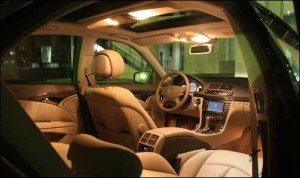Instrument lights may be the most commonly used internal vehicle lights. Using LED lighting applications to replace traditional instrument lights can dramatically reduce energy consumption, making a big difference. Thus LED instrument lights became the concentration of many domestic and overseas vehicle manufacturers. As in internal LED vehicle lights, energy saving is the primary object just like LED Street Light. However, in addition to the energy-saving function, internal vehicle lighting is also judged in the categories of most reliable and most aesthetic designs. Same as traditional instrument lights, LED instrument lights are mounted on the dashboard for lighting instrument pointer and scale plate, normal power of which is around 0.5W. Instrument lights are generally connected with indicating lights, license plate lights. When indicating lights or license plate lights work, the corresponding buttons on the instrument panel will be lightened to inform the driver. Some instrument lights’ luminous intensity can be adjusted. With the development of intelligent lighting technology, more and more sophisticated user-friendly design will appear in vehicle lighting.
Commonly used internal vehicle warning/indicating lights are oil pressure warning lights, excessively high water temperature warning lights, charging indicator lights, direction indicating lights, high beam indicating lights, etc. These lights can all be replaced by low-power LED lights. Warning lights are red (easier to attract attention), and indicating lights are green and blue. Normally, warning/indicating lights are mounted in the front of cabs, beside the instrument lights. As another important internal LED vehicle lights, LED warning/indicating lights enjoy a lighting status second to LED instrument lights.
LED working indicating lights are a kind of auxiliary internal LED vehicle lights, rarely used in daily driving, but necessary when cars broke down. LED working indicating lights are movable, often with a hook or clamp plug (a little cigarette lighter-type plug). The power comes from cars’ generators or batteries. The general power consumption of these lights is 21W. They have very high brightness, thus requiring a good cooling system.
LED vehicle lights can use LED High Bay to convert electrical energy into luminous energy, dramatically drop energy consumption (only 1/10 as much as traditional vehicle lights). As a result, it can more effectively save fuel consumption, keeping car circuits from burning by excessive loads.

